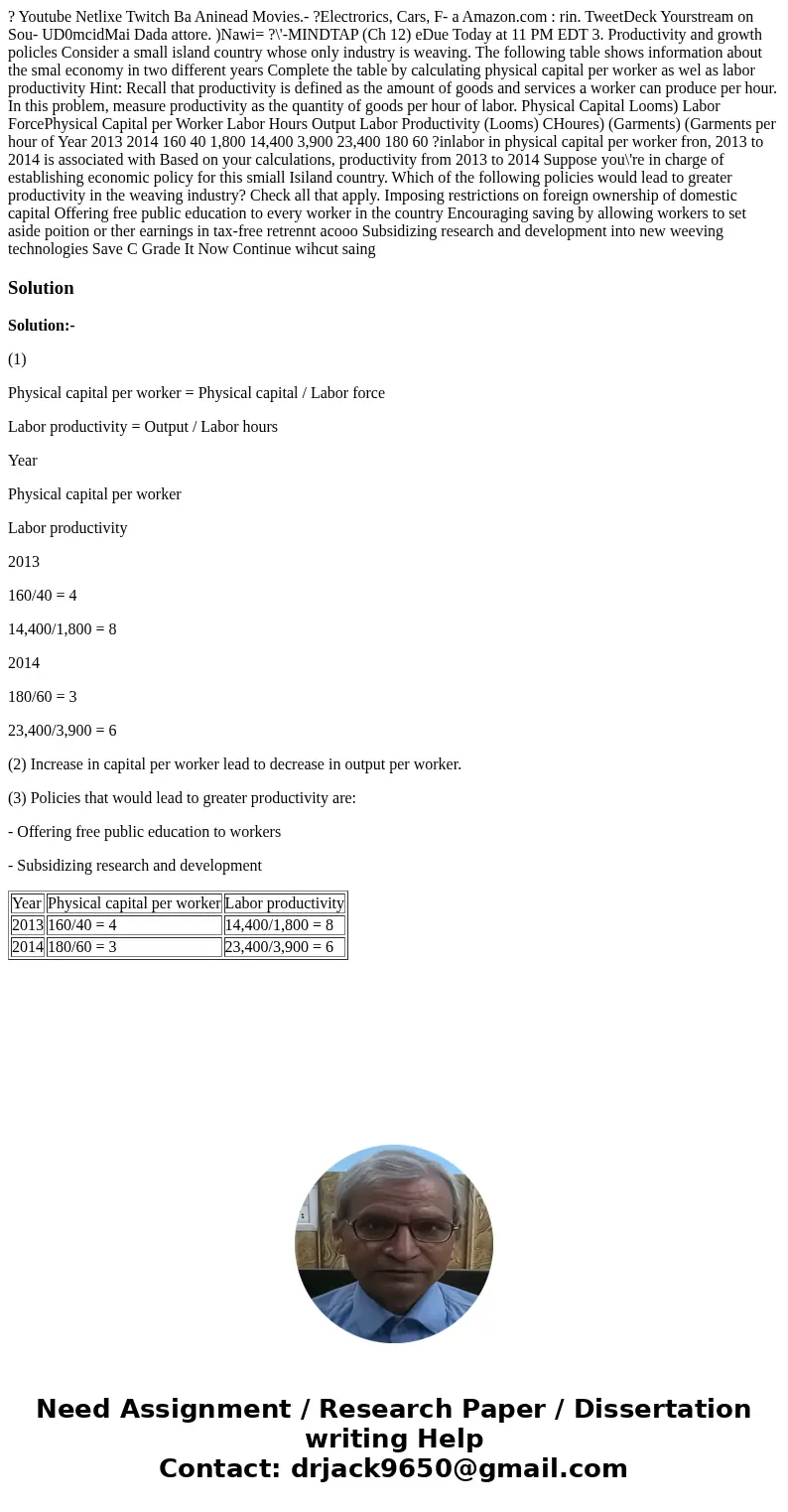Youtube Netlixe Twitch Ba Aninead Movies Electrorics Cars F
? Youtube Netlixe Twitch Ba Aninead Movies.- ?Electrorics, Cars, F- a Amazon.com : rin. TweetDeck Yourstream on Sou- UD0mcidMai Dada attore. )Nawi= ?\'-MINDTAP (Ch 12) eDue Today at 11 PM EDT 3. Productivity and growth policles Consider a small island country whose only industry is weaving. The following table shows information about the smal economy in two different years Complete the table by calculating physical capital per worker as wel as labor productivity Hint: Recall that productivity is defined as the amount of goods and services a worker can produce per hour. In this problem, measure productivity as the quantity of goods per hour of labor. Physical Capital Looms) Labor ForcePhysical Capital per Worker Labor Hours Output Labor Productivity (Looms) CHoures) (Garments) (Garments per hour of Year 2013 2014 160 40 1,800 14,400 3,900 23,400 180 60 ?inlabor in physical capital per worker fron, 2013 to 2014 is associated with Based on your calculations, productivity from 2013 to 2014 Suppose you\'re in charge of establishing economic policy for this smiall Isiland country. Which of the following policies would lead to greater productivity in the weaving industry? Check all that apply. Imposing restrictions on foreign ownership of domestic capital Offering free public education to every worker in the country Encouraging saving by allowing workers to set aside poition or ther earnings in tax-free retrennt acooo Subsidizing research and development into new weeving technologies Save C Grade It Now Continue wihcut saing

Solution
Solution:-
(1)
Physical capital per worker = Physical capital / Labor force
Labor productivity = Output / Labor hours
Year
Physical capital per worker
Labor productivity
2013
160/40 = 4
14,400/1,800 = 8
2014
180/60 = 3
23,400/3,900 = 6
(2) Increase in capital per worker lead to decrease in output per worker.
(3) Policies that would lead to greater productivity are:
- Offering free public education to workers
- Subsidizing research and development
| Year | Physical capital per worker | Labor productivity |
| 2013 | 160/40 = 4 | 14,400/1,800 = 8 |
| 2014 | 180/60 = 3 | 23,400/3,900 = 6 |

 Homework Sourse
Homework Sourse